Learning & development of children and adolescents
Six elements for learning are identified by The learning first alliance in Phi Delta Kappan April 2018 :
- Focus on the total child.
- Commitment to equity and access.
- Family and community engagement.
- Distributed leadership.
- Strong, supportive teaching force and staff.
- Relationship oriented school climate.
Learning Theory
Human development
- Tasks to explore the development of reasoning and logic with young and old
- Chart showing development ages of propositional logic, correlation, proportion, and probabilty
- Human brain development from conception to death Neurogenesis in the hippocampus
- Carnegie Report on Preparing Adolescents - Middle School Students
- Disequilibration and discrepent events in science investigations
Demonstration Activities to teach, discuss, and understand a Constructivist learning theory: Piagetian based
A Pretest to challenge and focus on how children and adolescents develop based on a constructivist learning theory.
The following activities provide experiences to demonstrate how people learn and how their learning can be explained by a learning theory in conjunction with instrutional methodologies and strategies.

- Start with a demonstration, like in the video above, using a pencil to pierce a plastic sandwich bag mostly filled with water. Information in science lesson format. Students will want to first discuss the physics of what happened. Do so and then turn the discussion to how it relates to learning and a learning theory.
- Can follow-up with another piercing this time of a balloon semi-filled with air with a bamboo skewer or sharpened knitting needle. Again discuss how it relates to learing and a learning theory.
- Follow the learning theory discussion with a discussion of how they focused their attention and learned can be related to teaching with a instructional methodologies (learning cycle).
These activities and discussions can provide a solid background in a constructivist learning theory and how it will guide educators in making instructional decisions based on how students think. Student thinking, while being very different can be categorized developmentally into a few broad developmental levels of thinking: pre-operational, concrete operational, and formal operational .
The following activities have been used over the years to reveal relevant differences in the ways young children, adolescents, and adults think and how those differences progress as they mature. The first activity: the garduckals puzzle can be used to review how a learning theory can explain the desire, search, and use of associations to find a solution and as a person completes the activity.
- Garduckals activity estimated time (5 minutes)
The next set of activites present puzzles or probems which have been historically used to study the devlopment of understanding of propositional logic, correlation, probability, and proportionality as they can be represented by the pre-operational, concrete operational, and formal operational levels. The activities are presented along with representative data to illustrate a comprehensive analysis of the thinking students use to attempt to solve and to solve problems requiring these types of thinking. A comprehensive review of many of these studies can be found in the book A Love of Discovery annotated in the sidebar on the right.
- Summary sheet for the puzzles and development.
- Jo Short or Jo Tall puzzle / activity - representative sample solutions
- Water Machine puzzle sheet - representative sample solutions
- Transportation puzzle- representative sample solutions
- Frog problem / activity
- Mealworms experiment / activity - representative sample solutions
- Puzzle discussions - with Longitudinal Development Chart of Mental operations
- Rings around the rose logic game
- Post Puzzle review
Questions to help understand a learning theory and how to use it to make teaching decisions
- What is the difference between how children learn, how children construct knowledge, and what a learning theory explains?
- How do assimilation, disequilibration, cognitive dissonance, equilibration, accommodation, ZPG (zone of proximal development), and developmentally appropriate fit in a learning theory?
- What variables affect learning?
- How do learning styles fit a learning theory?
- Describe your interpretation of the statement: All people learn differently.
- How should instructional theories or models fit with a learning theory?
Using developmental ideas to adapt activities for students
Miscellaneous brain related topics
Real world application
- Parent, "How do you faciliate your student's learning?"
- Principal, "Tell me how you believe children learn?"
- Principal, "If I walk into your classroom what will I see?"
- Principal, "Describe how teachers can use a theory on how children learn and incorporate it into their classroom instruction.
- Principal, "Tell me how you will teach so children can learn?
.
-----------------------------
A Love of Discovery: Science Education-The Second Career of Robert Karplus. Edited by Robert Fuller 2002.
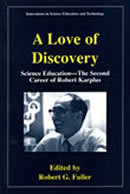
Robert Fuller, compiled a collection of documents along with a narraton that describes the positive impacts Robert Karplus had on science in elementary schools in the closing years of the twentieth century. Information that continues to shape elementary science education in positive ways.
Robert Karplus was a physicist who was asked to teach a science lesson in an elementary classroom. Inspired by how difficult it was to teach children, he began to research how to teach elementary students. He discovered Piaget's constructivist learning theory and discovered it helped to frame how student's learn, how they reasoned, how learning is comparable to doing science, and how these ideas could inform instruction. His background, as a physicist, helped him to research and understand how to apply new ideas through a process of curriculum development to implement continuous change. He demonstrate how a curriculum could be created and implemented in a manner which could be used that was developmentally appropriate, research based, facilitated science literacy along with a love of discovery, and develop reasoning and logic necessary to become critically thinking citizens. A very inciteful, interesting, and enjoyable book that can inform all science educators.
--------------------- --------
-----------------------------
Piaget's Theory of Cognitive Development. editions 1-5 2003.
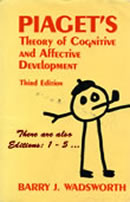 Classic book on cognitive & affective development. A must read for anyone serious in wanting to understanding learning and how intelligence, logic, and thinking develops cognitively and affectively.
Classic book on cognitive & affective development. A must read for anyone serious in wanting to understanding learning and how intelligence, logic, and thinking develops cognitively and affectively.
-----------------------------
Piaget for the Classroom Teacher. 1973.
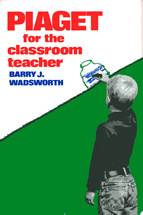
Includes examples of how to use Piaget's learning theory and ideas on cognitive & affective development in the classroom. Source for many of the tasks to explore student development of reasoning, conservation, & logic.
-----------------------------
More Piaget readings:
-----------------------------
Chidren and Adolescents: Interpretive Essays on Jean Piaget. 1974.
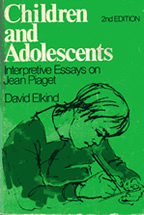
-----------------------------
A Piaget Primer: How a Child Thinks. Revised edition. 1996.
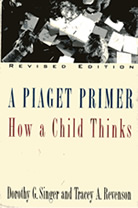
-----------------------------
